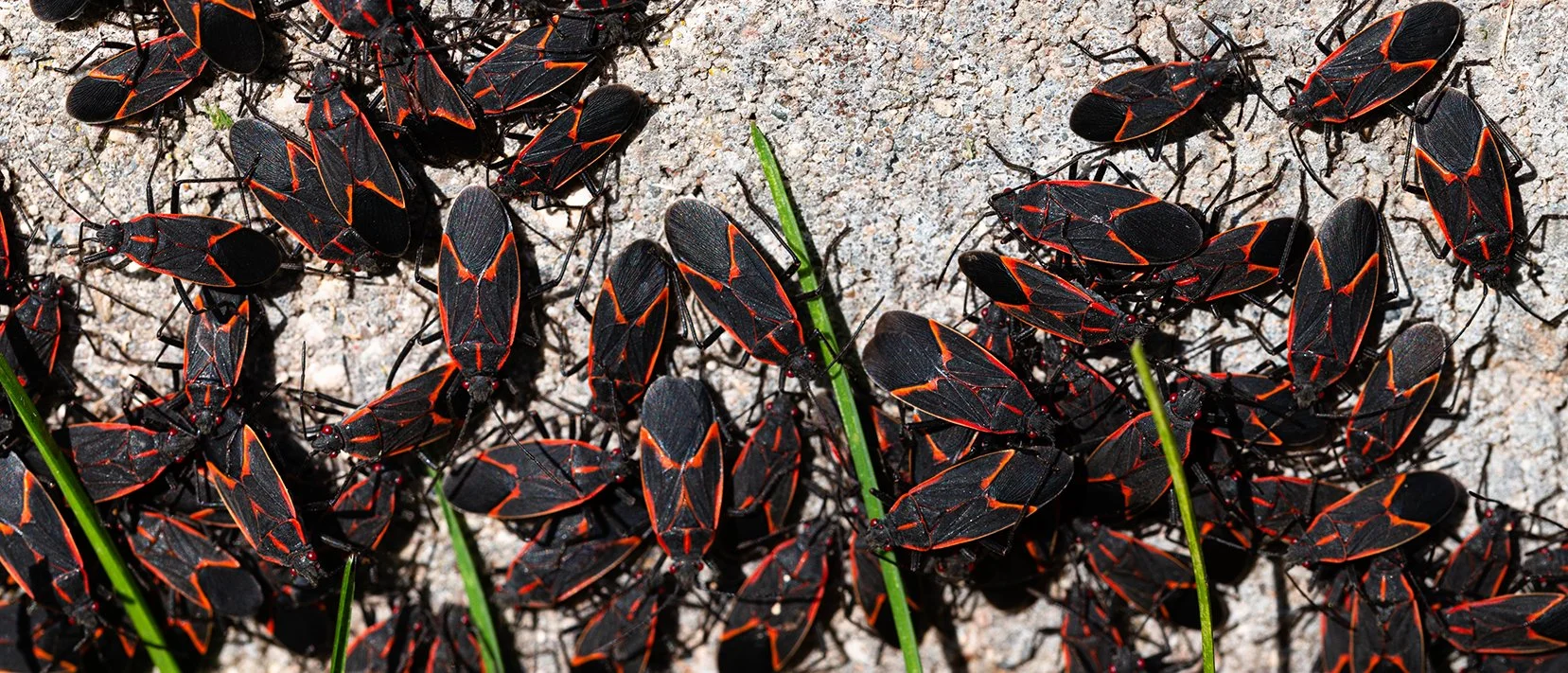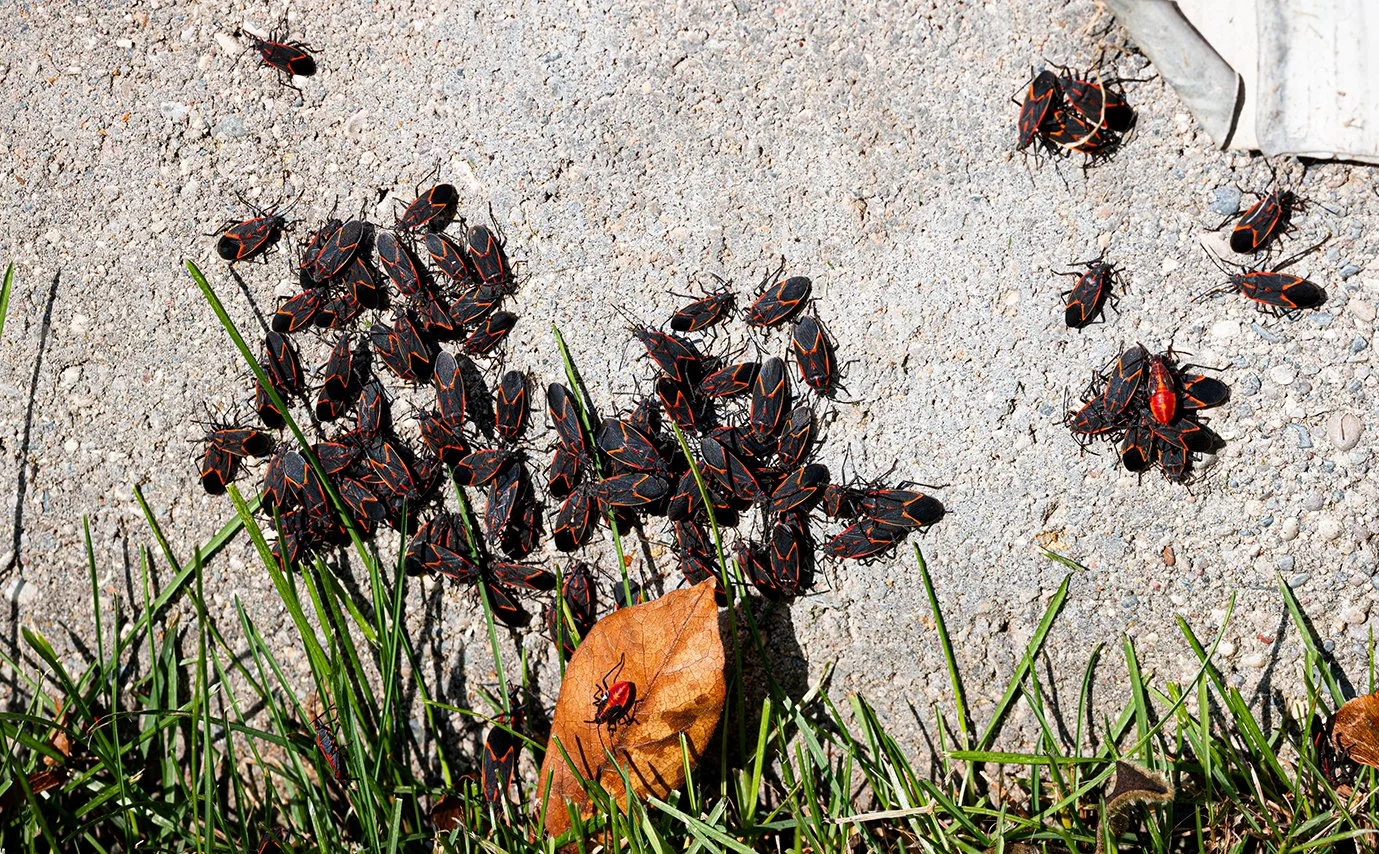Boxelder Bugs
Boxelder bugs are small, black-and-red insects that commonly appear in Southern California during the fall as temperatures cool. They feed on the seeds and foliage of boxelder, maple, and ash trees outdoors, but as the weather drops, they seek warm shelter. Often massing on sunny walls or clustering inside attics, wall voids, and behind window and door frames. While they don’t bite or transmit disease, large indoor infestations can stain walls and fabrics with their excrement and become a persistent nuisance.



Behavior
Boxelder bugs are primarily plant feeders, feeding on boxelder trees, maples, and other seed-bearing trees. In the fall, they congregate in large numbers on warm, sunny surfaces and seek shelter indoors to overwinter. Although they do not bite, they can emit a foul odor when crushed.
-
Feed on boxelder trees, maples, and other seed-bearing trees
Congregate in large numbers during warm, sunny days
Seek shelter in homes and buildings in fall for overwintering
Do not bite or sting but can emit a foul-smelling liquid
May stain surfaces with their excretions
Identification
Boxelder bugs are strikingly marked insects with black bodies and distinctive red or orange markings along their wings and thorax. They are about 1/2 inch long and have a flattened, elongated shape. Nymphs are smaller and bright red, lacking fully developed wings.
-
Black bodies with red or orange markings
Approximately 1/2 inch long, elongated shape
Nymphs are bright red, wingless
Prominent, triangular-shaped markings behind the head
Six legs and two antennae
Nesting
Boxelder bugs do not construct nests but instead gather in large numbers under tree bark, in cracks, or in wall voids. During the winter, they hide in protected areas like attics, wall voids, and basements, emerging in spring to resume feeding and reproduction.
-
Seek shelter under tree bark, in cracks, and wall voids
Congregate in large numbers in protected areas during winter
Hide in attics, basements, and wall voids in homes
Emerge in spring to resume feeding and mating
No specific nesting structure, but can cluster in large numbers
Impact
Boxelder bugs are more of a nuisance than a direct threat to structures or people. They do not cause structural damage, but their large numbers can be alarming, and they can stain walls, curtains, and furniture with their excretions. Additionally, when crushed, they emit a foul odor.
-
Nuisance pests – gather in large numbers and invade homes
Can stain surfaces with excrement, leaving dark spots
Emit a foul odor when crushed
Do not bite, sting, or cause structural damage
Can be difficult to control once inside buildings


